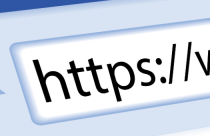Primer on Coercive Citation in Academic Publishing

There are plenty of methods for senior personalities to include their names in academic journals, even without participating in researches. There are also many ways to force researchers to add some information in their papers that grant researchers a privilege to some interests. And there is a publishing practice that combines them two: the so called coercive citation.
Coercive citation is an unethical practice in which an editor forces researchers to add unnecessary citations to other papers (that belong to the same journal). There are many reasons to do that, but the most common one is to inflate the journal’s impact factor.
Here you have a brief primer on coercive citation to help you understand this practice better:
An Academic Paper’s Usual Tour in the Publishing World
Once a publication proposal is accepted and the content is written, the researcher submits the manuscript to an editor. This follows a rigorous peer review: the manuscript is reviewed by experts in the same field. This phase is organized by the journal editor and is completed when the content is ready for publication. Then, the production process starts.
It is in the peer-proofreading phase that coercive citation occurs. Editors suggest researchers to add citations that contribute to inflate the journal’s impact factor. Adding these citations is not always necessary, a fact that causes disagreements between editors and researchers.
Increasing the Academic Journals’ Impact Factor
The journals’ impact factor is a measure that reflects the number of citations to articles published in the same journal. This factor, that takes into account those journals that are indexed in the Journal Citation Reports yearly, determines the journals’ prestige. The impact factor is used to evaluate not only the journals, but also individual papers.
But, taking into consideration a paper through the impact factor, when looking for relevant literature, is not always the best idea, since it does not measure academic journals qualitatively. Furthermore, it can’t be used to compare journals that belong to different disciplines.
But the fact is that coercive citation is a common practice. According to a survey conducted with 6,700 academics and scientists from different disciplines and published by Wilhite and Fong in 2012, 1 in 5 respondents confirmed that they had experienced coercive citations. Furthermore, 86% of them considered it unethical.
Good Practices
How much power does the editor have in relation to the researchers? And what about the researchers’ decision to consider what is relevant or not in their academic papers? There is not much that a researcher can do when an editor suggests to add more citations to a paper. These suggestions are usually requirements for its publication.
Coercive citation is a great example to elucidate the differences that exists between the big academic journals’ publishers and researchers. Even though impact factor is important to position a paper, mentioning irrelevant citations as advised by the editor should not be a common practice.
But, can researchers fight for their integrity among editors? Could academic associations help in condemning this practice? Looking for reputation seems to be more than never a duty for publishers nowadays.









